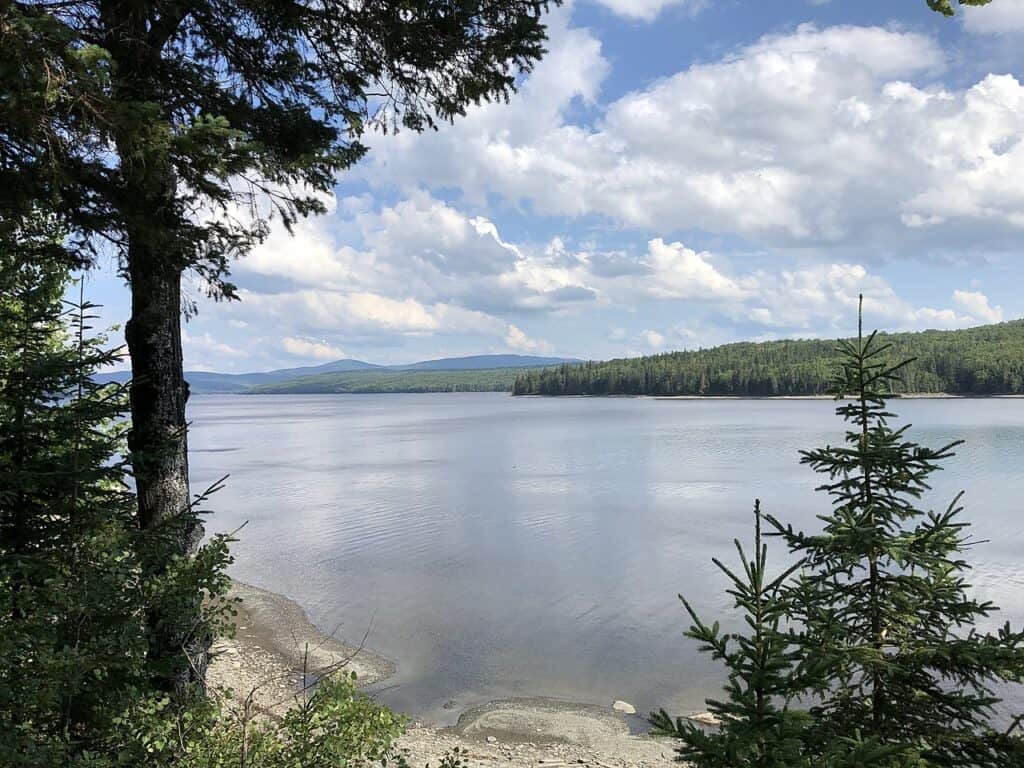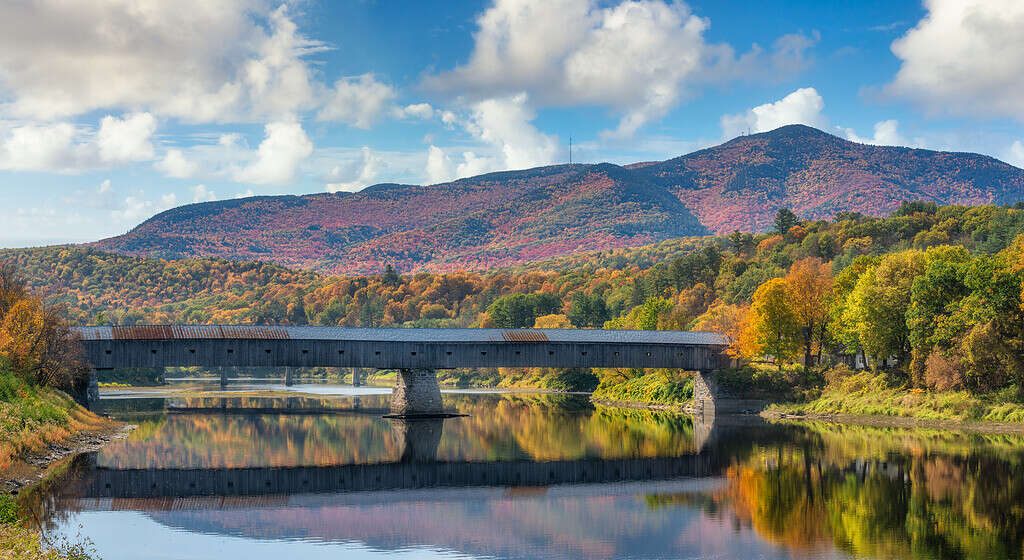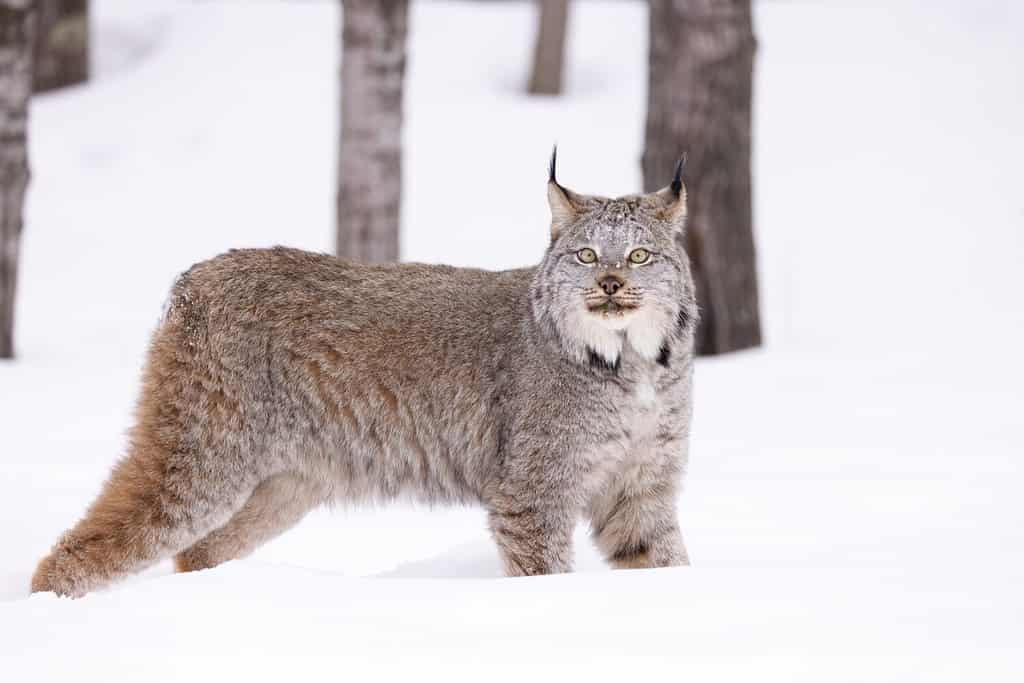At its deepest point, the Connecticut River is 130 feet down. The spot of this aquatic chasm is the French King Bridge in Erving, MA. Just how deep is the Connecticut River overall? Most areas of this marathon-length river are around 10 to 20 feet (3 to 6.1 m) deep.
This river is the largest throughout New England. For rivers that start and end in the Northeastern US, only the Susquehanna of New York and Pennsylvania appears to be longer.
The Connecticut River: A Historic Powerhouse Waterway

©Joshua Lehew/Shutterstock.com
Today, the Connecticut River is a literal powerhouse with numerous dams that create hydroelectricity. More than 3,000 total dams, hydroelectric or otherwise, are within its various tributaries. That sheer quantity indicates just how long this river has been a part of the land around it.
First Nations Sokoki people were present along the river around 800 AD. And the first European to encounter it was a Dutch navigator, Adriaen Block, in 1614.
It’s Literally a Long River

Lake Francis, right near Fourth Connecticut Lake in Pittsburg, NH is a full-service lake with camping, hunting, wildlife viewing, boat launches, and awesome trout fishing.
©Dmoore5556 / Creative Commons – License
The word “Connecticut” literally means “(place of) the long river” in Mohican. And it is quite long. At over 407 miles (655 km) in length, it shoots through four states: Vermont, New Hampshire, Massachusetts, and Connecticut.
How deep is the Connecticut River? It’s a lot longer than it is deep. The river nearly includes a second country! Fourth Connecticut Lake in Pittsburg, NH, is around 1000 feet from the Canadian border.
In terms of length and drainage area, the Susquehanna has the Connecticut River beat. But for length, it’s not much. The Susquehanna only beats the Connecticut by 37 miles.
This New England Waterway Is Surprisingly Deep As Well

Autumn view of Cornish-Windsor Covered Bridge – longest in New Hampshire and Vermont on the Connecticut River
©iStock.com/Craig Zerbe
How deep is the Connecticut River? Well, 130 feet might not sound very deep, but it’s up there when stacked next to other US rivers. The Hudson River, in the Northeastern US, is the deepest in the nation with a 216-foot nadir. That’s 86 feet deeper than the Connecticut River’s French King’s Bridge spot. But, at 130 feet, it’s deeper than the Grand Canyon’s own Colorado River. According to Safe Harbor Fishing, the Colorado has a maximum depth of only 85 feet (25.9 m) at mile number 135. Other estimates say 90 feet (27.4 m).
The Connecticut River has one thing on its nearest competitor: depth. The Susquehanna only sinks to 33 feet.
Plants and Animals in and Along the Connecticut River

Canada lynx. The elusive lynx of the Northeast has been spotted once again in and around the Connecticut River.
©Agnieszka Bacal/Shutterstock.com
Trout, shad, and bass each have numerous species swimming throughout the 407 miles of the Connecticut. Overfishing of shad that threatened their population has been addressed, and they are now recovering. And, after centuries of absence, the Atlantic salmon can also be found in certain landlocked lakes along the river.
Though once an endangered species, the Northeastern lynx is also showing up along these forested riverbanks and the states that contain them. Waterfowl and Canada geese are common along the river as well. And, hiding among actual cobblestones along the deep Connecticut river shorelines are the rare cobblestone tiger beetle.
As for vegetation, the majority of the river is hugged by forestry—a whopping 77 percent, according to the US Army Corps of Engineers.
Where Is the Connecticut River on a Map?
The Connecticut River shoots down from the edge of Quebec in an almost straight line. Forming the border of New Hampshire and Vermont, it travels clear down through Massachusetts and Connecticut to Long Island Sound. The regionally large cities of Springfield, MA, and Hartford, CT, sit along the river.
The photo featured at the top of this post is © Vasili Eliopoulos/iStock via Getty Images
Thank you for reading! Have some feedback for us? Contact the AZ Animals editorial team.






